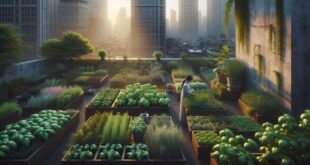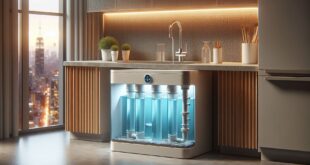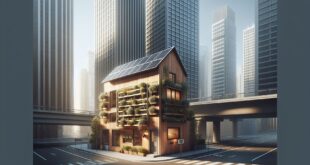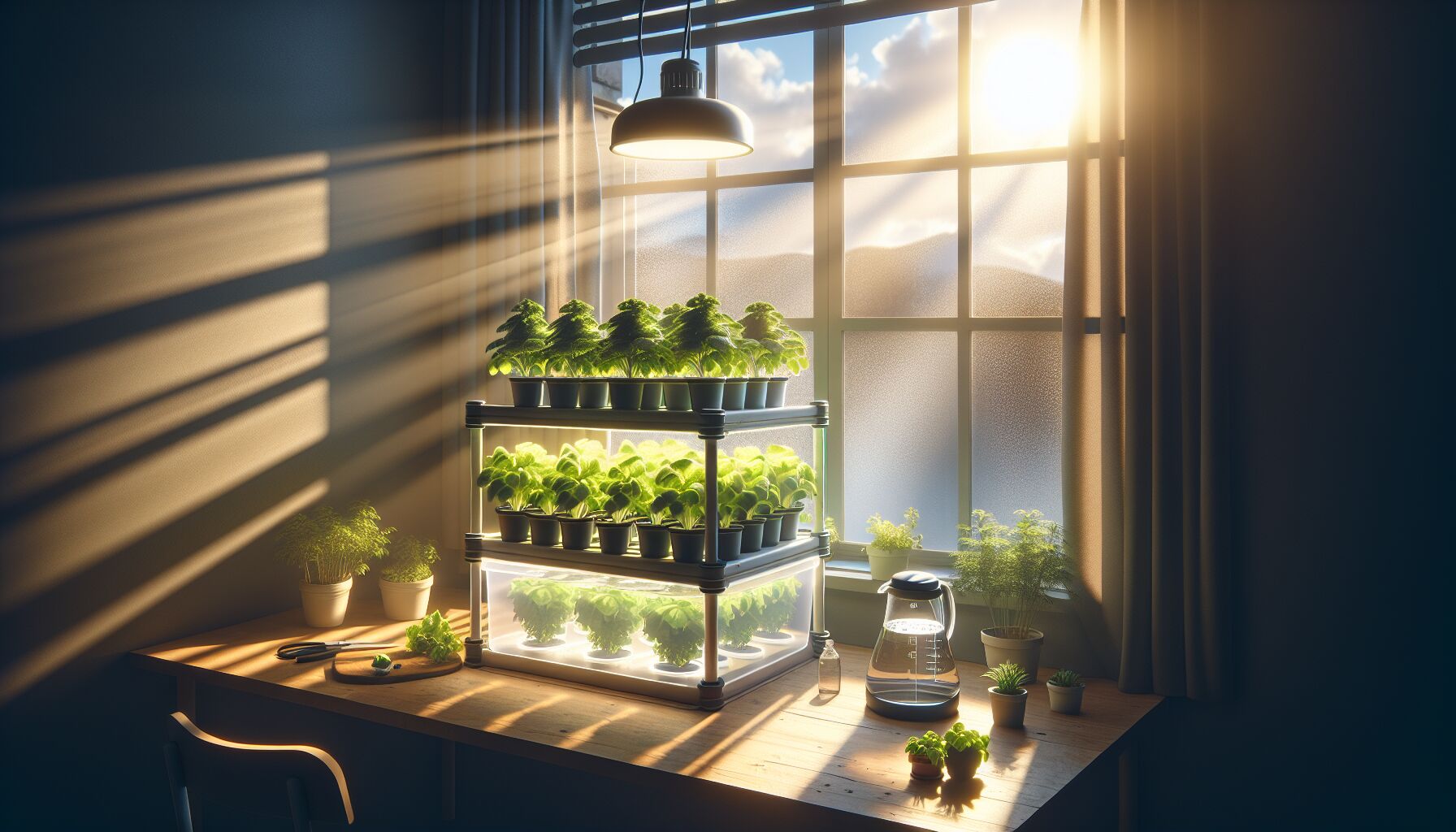 When you commit to growing food without soil, space becomes both the challenge and the invitation. Choosing the right hydroponic system isn’t about gimmicks or gadgets — it’s about the relationship between your daily life and the life you want to cultivate. Whether you’re working with a sun-drenched windowsill or a sliver of a city balcony, each space carries its own rhythm. That rhythm decides what system will thrive there.
When you commit to growing food without soil, space becomes both the challenge and the invitation. Choosing the right hydroponic system isn’t about gimmicks or gadgets — it’s about the relationship between your daily life and the life you want to cultivate. Whether you’re working with a sun-drenched windowsill or a sliver of a city balcony, each space carries its own rhythm. That rhythm decides what system will thrive there.
Hydroponics — growing plants in a water-based, nutrient-rich solution — strips growing down to essentials. No soil, no inherited pests, no guessing. Just roots, water, nutrients, light, breath. If you’re serious about food security, especially in an urban setting, hydroponics gives you the chance to take your nourishment into your own hands — literally.
Let’s get to the real choices.
- You’re in a small space — what survives must serve
Every square foot in your home matters. Consider not just physical room but also time, noise, and maintenance. A basic rule: The simpler the system, the less it asks of you.
Wick systems are the most humble starting point. Passive, nearly silent, and requiring no pump or electricity — they rely on natural capillary action to draw nutrient solution from a reservoir up to the plant roots. Perfect for leafy greens and herbs. Low yield, but also low stress. They’re ideal for folks who travel often or want to try hydroponics without constant involvement.
- For more yield, but still close to the bone — look to Kratky
The Kratky method is another passive system (no electricity needed once it’s set), and it’s a brilliant middle ground. Imagine net pots held in place above a reservoir; the roots grow deeper into the water as it drops, chasing nutrients and oxygen. It invites observation and intuitive adjustment. Tomatoes, peppers, even cucumbers can be grown this way if your containers are deep enough. This is a strong choice for anyone craving self-reliance without tech-saturation.
- When you have time and more control — enter the recirculating systems
Now we move into systems that require a bit more care, but reward it greatly.
A deep water culture (DWC) system suspends plant roots in a consistently aerated reservoir. Air stones (common in aquariums) pump bubbles into the water, keeping oxygen levels high. This boosts growth across the board — greens, herbs, and fruiting crops. Because the nutrient solution stays in the system and just needs occasional replenishment, it cuts waste and cost over time. DWC is a top choice for urban farming setups where daily attention is possible. Grow lights make it amenable to even windowless closets or converted pantries.
Then there’s the nutrient film technique (NFT) — where a thin film of nutrient-rich water moves through gently sloped channels, brushing against plant roots anchored in net pots. It’s tidy, efficient, and scalable, and its modular design makes it popular for vertical gardening. However, it demands consistent power, monitoring, and a bit of plumbing logic. If you’re the kind of person who finds joy in tuning your system like a well-made bicycle, NFT might suit you.
The ebb and flow (flood and drain) setup blends rhythm and reliability. It floods the grow tray at set intervals, soaking the root zone before draining back into a reservoir. This rhythmic feeding mirrors the flood cycles of natural riverbanks, bringing oxygen, water, and nutrients in waves. The setup can be small or large — and allows you to grow an impressive range of vegetables with deeper root systems. Good fit if you have space to set timers and can commit to checking on things every couple of days.
- Vertical systems: When square footage won’t give, go up
For anyone with a narrow balcony or a tight kitchen corner, vertical hydroponics takes gravity into account and flips it into an ally. These towers, stacked channels, or wall modules redirect space constraints into opportunity. Water trickles from the top, collecting below and recirculating through a pump. Yield per square foot is high. Maintenance varies — some systems need frequent top-offs and light balancing. But for the intentional grower, it’s an elegant solution to urban limitations.
There are
The benefits of home hydroponics
If you’re growing food in water, without the buffer of soil to hide your mistakes, you don’t get to pretend. You learn quickly what a plant actually needs — light, nutrients, oxygen, water, consistency — and how small imbalances create big results. That’s where the real beauty of hydroponics lives: it gives clarity. Clarity about your food. Clarity about your habits. Clarity about your relationship with the living world.
The benefits start at the roots — and ripple outward.
- No soil, no mess, no guessing
In traditional gardening, soil is both a resource and a risk. Poor drainage, depleted nutrients, pathogens, or contaminants from urban runoff can sabotage months of effort. With hydroponics, you eliminate that variable. There’s no tilling, no soil-born pests, no fungal sprawl — just direct access for roots to drink what they need. You customize the nutrient mix and pH, control the exposure cycles, and tune the environment toward vitality. And because hydroponics runs cleaner, you won’t be dragging dirt through your apartment or dealing with plagues of gnats.
That cleaner system means fewer chemicals. No pesticides or harsh sprays. Just intention, observation, and adjustment.
- Less water, more yield
This might seem strange — growing in water to save water — but it’s true. Hydroponic systems reuse and recirculate water, cutting consumption by up to 90% compared to conventional agriculture. That savings matters deeply, especially as climate instability reshapes rainfall patterns and groundwater access. The U.S. Department of Energy’s research points to agricultural irrigation as one of the largest draws on local water resources. When your system is closed-loop and feeding only what’s needed, you’re part of the solution.
And the plants respond. Root access to nutrients 24/7 means faster growth — many hydroponic vegetables reach maturity in half the time. A head of lettuce might take 30 days instead of 60. Your salad bowl doesn’t have to wait on seasons.
That efficiency matters when each square inch of life matters, especially in urban farming. One small vertical tower in a city window can produce fresh greens, herbs, or strawberries every week — without once stepping outside or tearing up a backyard.
- Year-round abundance, rain or shine
Hydroponics removes your dependency on weather. Once you’ve set up a proper lighting schedule and a stable grow area, the growing season never ends. This not only means fresh food in February — it means consistency. You’re not bracing for droughts, freezes, or blight. You’re moving toward food security in its truest form: not fear, but frequency. The ability to harvest dinner no matter what’s happening outside.
It also deepens autonomy. When shelves go empty or shipments are late, your home garden doesn’t flinch. You’ve kept your attention on the root, and the root has kept feeding.
- Compact rhythm, cleaner energy
Modern hydroponic setups, even the DIY ones, work in small loops. A single low-watt air pump, a full-spectrum LED panel, and a five-gallon bucket system can run for weeks with minimal power draw. When timed properly or connected to a solar array, these systems approach net-zero behavior. A far cry from industrial food systems that burn diesel to truck lettuce across states.
There’s something sacred about syncing your food with your home’s energetics — tying your rhythm of meals, light, and movement into a shared circuit. Rather than outsourcing nourishment, you bring it into your sphere of care.
As this study on local food resilience suggests, micro-gardens, especially when hydroponically grown, foster both emotional and community stability. Neighbors share cuttings. Kids ask questions. Systems spread. Patterns change, gently.
- Higher nutrition, shorter supply chains
What you’ll need to get started
Once your mind’s made up and the seed of intention is planted, the next question is simple: what do I actually need to begin? Hydroponics may be high-tech in theory, but it doesn’t have to be expensive or overwhelming. If you’re setting up a small-scale system at home, whether in a city apartment, a yurt in the woods, or anywhere space is tight, the essentials are remarkably few. Simplicity supports commitment — and every item in your setup should serve the deeper rhythms of growth, not distraction.
Let’s run through the core components you’ll need to establish a working hydroponic system that feeds you back.
- Container or reservoir: holding the base water solution
This is the heart of your system — a vessel that holds the nutrient-rich water your plants will draw from. Depending on your chosen hydroponic method, this could be as modest as a five-gallon bucket (common in Kratky setups) or as elaborate as a 30-gallon reservoir with tubing and a pump.
Key points:
- Opaque containers are best — light promotes algae, which competes with your plants
- Plastic totes, food-safe buckets, or repurposed bins all work if cleaned thoroughly
- Match the size of the reservoir with your plant load — more plants require a higher volume of solution
Don’t overthink here — even an old cooler with a hole drilled in the top can carry you further than you expect. Use what you have when possible, and keep it clean.
- Net pots: giving roots a path and place
Net pots are specialized containers with slotted sides that allow roots to grow through and into the nutrient solution. They fit easily into holes cut into your reservoir lid or growing channel. These support each plant, keeping it upright and stable while exposing root zones.
Sizes range from 2 to 6 inches in diameter — pick based on what you’re growing. Lettuce? 2 inches is fine. Tomatoes or peppers? Go bigger.
They’re reusable year after year if washed and dried well between cycles.
- Growing medium: anchoring the roots without soil
Because hydroponics is soil-free, your plants need something inert to hold them in place. This growing medium should neither rot nor bond with nutrients — it’s there simply to support and breathe.
Top choices include:
- Clay pebbles (hydroton) — lightweight, reusable, and highly aerated
- Coco coir — sustainable, retains moisture well, and derived from coconut husks
- Rockwool — commonly used for starting seeds, highly absorptive
Avoid anything organic that decays — like soil mixes, compost, or bark — as these will throw off water chemistry fast and harbor fungi or disease.
- Nutrient solution: feeding the invisible needs
This is the nourishment source that replaces soil. A hydroponic plant drinks directly from this life stream, so it has to be well balanced — much like how we thrive best with clean water, whole foods, and sunlight.
Look for nutrients specifically formulated for hydroponics. These typically contain macronutrients (nitrogen, phosphorus, potassium) and a full spectrum of micronutrients (calcium, magnesium, iron, etc.).
You can start with a ready-mixed solution like General Hydroponics’ Flora Series or explore organic routes that honor your approach. There are also increasingly available DIY mixes where you can adjust levels precisely — but save this for after your first few harvests.
Monitor your nutrient solution weekly and top it off often. This fluid is your garden’s bloodstream, so treat it with the same reverence you’d give your own.
- pH meter and EC/T
Step-by-step guide to setting up your system
Setting up your first hydroponic system isn’t about mastering a science — it’s about building a relationship with living things. It’s hands-on, often slow, sometimes messy—but always rooted in care. If food security and urban farming feel like abstract causes, this is where they become personal: a basil plant, a tomato blossom, roots breathing in silent water. Here’s how to start.
- Choose your growing space thoughtfully
This might be a kitchen counter, a south-facing window, a shelf in your bedroom, or a balcony that catches light just enough hours a day. Hydroponics doesn’t need much space, but it does need attention.
Look for:
- Steady temperatures (ideally between 65–75°F)
- Access to an outlet if you’re running lights or pumps
- Minimal traffic — keep curious pets and grasping toddlers away
When your grow space is peaceful, your plants will often tell you what they need just by how they look.
- Assemble your system step by step, by feel
At its core, a working hydroponic setup is simple: container, net pots, medium, water, nutrients, and optionally light and airflow.
Here’s a basic Kratky-style setup, ideal for leafy greens:
- Drill holes in the lid of a food-safe bucket or storage bin to fit net pots. Space them so plants have breathing room (4–6 inches apart is safe for lettuce or herbs).
- Place net pots in the holes, filled with your chosen inert medium (hydroton or coco coir work well).
- Mix your nutrient solution according to label directions and pour into the reservoir. The water should touch the bottom of the net pots so seedlings’ roots can find it.
- Plant pre-sprouted seedlings — started in rockwool or paper towels — into the net pots. Don’t bury the stems too deep.
There’s something meditative about this process. You’re creating a home for another being. It doesn’t need to be fancy — it needs to be sincere.
- Set up lighting if the sun doesn’t show up
If you’re near a bright window that gets 6–8 hours of sun a day, you’re in good shape. But in most urban environments — with high-rises, cloudy seasons, or poorly oriented apartments — supplemental lighting is essential.
LED grow lights are the most efficient and widely available option. Look for:
- Full-spectrum lights that mimic natural daylight (around 5000–6500K)
- Positioning 12–18 inches above your plants
- A timer to automate a 12–16 hour light cycle
Your plants will show you if you’ve got it right. If they’re long and leggy, the light’s too weak or too far. If tips burn, it’s too close. This tuning is part of the silent conversation between you and them.
Reconnect often.
- Monitor the nutrients and pH — weekly, without fail
A hydroponic plant doesn’t get to pull food from the soil at will — it’s fully at the mercy of the solution you give it. Getting this balance right is what keeps the leaves clean and the roots white.
You’ll need:
- pH meter or pH test strips to keep levels between 5.5–6.5
- EC (electrical conductivity) meter to measure nutrient concentration</li
Success story: A thriving balcony garden in Brooklyn
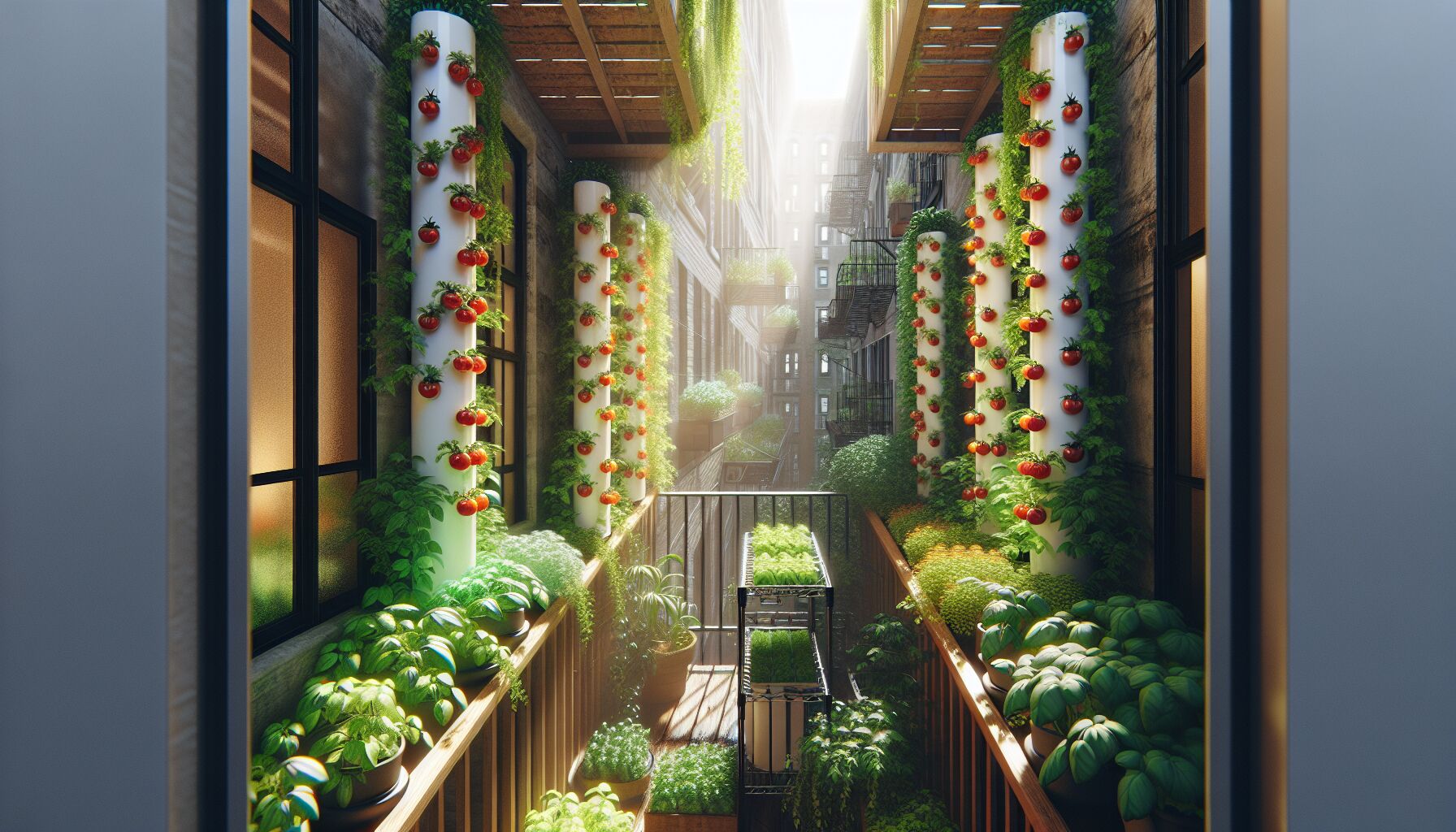 From a fifth-floor walk-up in Brooklyn, what began as a hopeful experiment in food security became a weekly harvest — basil, bok choy, cherry tomatoes — all grown without a speck of soil. Naomi, a full-time nurse with long shifts and little spare time, didn’t set out to become a gardener. But after supply chain breakdowns during 2020 and a rising sense that she could no longer rely solely on store shelves, she turned to hydroponics — not as a hobby, but a necessity.
From a fifth-floor walk-up in Brooklyn, what began as a hopeful experiment in food security became a weekly harvest — basil, bok choy, cherry tomatoes — all grown without a speck of soil. Naomi, a full-time nurse with long shifts and little spare time, didn’t set out to become a gardener. But after supply chain breakdowns during 2020 and a rising sense that she could no longer rely solely on store shelves, she turned to hydroponics — not as a hobby, but a necessity.Her balcony is narrow — only about 3 feet deep and 12 feet long. It catches bright light from late morning to late afternoon, but the wind off the East River is steady, and the winters bite deep. Naomi knew traditional container gardening wouldn’t cut it: “I didn’t want to be lugging heavy soil up stairs, dealing with fungus, or watching everything wilt as soon as the frost hit.”
She stumbled across the Kratky method through a friend who taught high school biology. Simple. No pumps. No plugs. Just a couple food-grade bins, net pots, and a little intentional setup. Her first plantings were practical: spinach and kale. By week four, the leaves were tender and abundant. “These greens didn’t taste like store spinach,” she said. “They tasted like something awake.”
As she gained confidence, Naomi added a vertical system — a tower made from repurposed PVC pipe and gravity-fed circulation powered by a tiny water pump. With only 14 square feet of usable growing area, the system now supports over 30 plants at once. Leafy greens grow in stacked tiers while pole beans weave up a lattice. A single sungold cherry tomato plant — pruned and trained — delivers clusters of fruit weekly in the warm months.
Lighting was one of her biggest lessons. While summer sun was plentiful through the south-west facing pane, shorter days and long gray spells in winter made supplemental light essential. She uses two full-spectrum LED bar lights set on automated timers, drawing less power than her coffee maker.
Maintenance remains minimal. Once a week, Naomi checks pH with a handheld meter, tops off the nutrient solution, and gives everything a visual once-over. The ritual has become part of her Sunday routine. “It’s meditative,” she says. “In a city that’s always reaching outward, hydroponics draws your attention inward — to the roots, the water line, the tone of each leaf.”
She’s also avoided the costly trap of over-investing in commercial setups. Many of her supplies — like five-gallon restaurant pickle buckets or salvaged styrofoam panels — came from Craigslist or neighbors tossing hardware. It’s a system built of odds and ends, but assembled with care. And that care shows in harvests: four to six ounces of salad greens every three days, handfuls of herbs weekly, and six cherry tomato clusters per plant during peak.
What started as a private response to uncertain times has morphed into something shared. Naomi now walks new neighbors through her setup. More than one local has started their own apartment hydroponics system using her spare seeds and cuttings. The tiny balcony garden has become a food-giving node in a neighborhood with few fresh produce options nearby.
Hydroponics isn’t magic, and Naomi is the first to say so. Things have gone wrong — aphids arrived once (easily managed with neem and airflow), and a clog in the tubing taught her to always install a mesh pre-filter. But setbacks have become homework, not heartbreak. She treats each hiccup as a learning, much like nursing — “you pay attention, notice patterns, and respond early.”
For anyone in the city wondering if urban farming is worth the squeeze, her answer is simple: “Grow one plant. Watch what happens inside you.”
What Naomi found was not just the control of her food source, but a deeper rhythm. One that connects breath to root, routine to nourishment. In a noisy place, your plants don’t lie. They show you what balance looks like. Week by week, leaf by leaf, that honesty becomes an anchor in uncertain times — and that’s the quiet power of hydroponics at home.
Top tips and warnings for hydroponic beginners
Starting strong means expecting struggle. Hydroponics is simple… eventually. The learning curve has its own slope. Here are the hard-won takeaways, not from glossy boxes but from real buckets in real apartments, where hydroponics meets real life.
- Start small — with fewer plants and one system
In the beginning, less is more. One container, three to five plants, and a single passive system like Kratky is enough to initiate understanding. Hydroponics is about precision, and that means observation. Running five systems across three rooms before you’ve successfully harvested basil is a fast track to burnout. Build clarity before complexity. A handful of healthy lettuces will teach you more than a wall of struggling tomatoes.
Too many new growers pile on tasks and tech before they’ve rooted themselves in the actual rhythm of plants. Master one system. Taste the food. Grow from there.
- Respect the root zone — clean, oxygenated, consistent
Everything above the surface reflects what’s happening below. White, firm roots signal health. Brown or slimy roots with a swampy smell? That’s root rot — usually caused by poor airflow, warm stagnant water, or microbial imbalance.
Here’s how to avoid it:
- Never let water temps rise above 70°F — aim for 65°F if possible
- Use air stones and pumps if your system needs active aeration
- Keep reservoirs shaded and sealed against light to prevent algae
- Flush your system and rinse roots every 4–6 weeks
Think of roots like lungs — they need clean air and balanced moisture. Protecting them protects everything.
- pH balance isn’t a suggestion — it’s the gatekeeper
If your plants are yellowing, curling, or stunted, check the pH first. Roots can’t absorb nutrients properly unless the solution’s acidity is in the right range. Even if your solution has all the right minerals, the plant won’t “hear” them if the pH is off.
Hydroponics likes it between 5.5 and 6.5. You’ll need:
- A digital pH meter — accurate and quick (calibrate weekly)
- pH up/down solutions — like phosphoric acid or potassium hydroxide
- Consistency — check and adjust at least weekly, or sooner if you’re noticing changes
This is kitchen alchemy — not exotic, not hard, just steady care. Once you get the feel for your water and your plants, adjustments become instinctual.
- Choose crops that thrive hydroponically
Not everything grows equally well in water. Stick to clear winners until you have experience.
Best beginner crops:
- Lettuce (butterhead, romaine)
- Spinach
- Swiss chard
- Basil and most herbs
- Bok choy
Later, if your system allows, add tomatoes, peppers, strawberries, or pole beans — just expect higher input and tighter monitoring. If your first grow fails because tomatoes needed constant pruning and micro-calcium adjustments, that can shake motivation. Start with the easy givers.
- Don’t chase perfection — chase observation
The most valuable habit in hydroponics is looking closely, not tweaking endlessly. Check water levels. Glance at leaf edges. Smell the reservoir. Touch the medium for dryness.
As with any stewardship, presence over
Try it today: Your no-excuse guide to growing fresh food indoors
Try this: buy a $5 basil plant from the grocery store, some net pots, and a used bucket. That’s all you need to begin. Start there — that’s your no-excuse entry to growing food indoors.
This isn’t about building some perfect high-yield system overnight. It’s about shifting from consumption to cultivation. Hydroponics at home isn’t a trendy garden hack — it’s a daily, grounded act of food security. It meets uncertainty with assurance, space with ingenuity, and rhythm with response.
To begin, simplify everything.
- Choose one plant, one method, one container
Forget all the gear and gadgets you’ve seen. Just pick one edible you enjoy and grow it. Lettuce, basil, mint, swiss chard — these aren’t exotic or moody crops. They’re forgiving, fast-growing, and perfect for first-timers.
A Kratky setup is ideal: no electricity, no moving parts. Just a container of nutrient solution, a net pot, and light. If you’ve got a south-facing windowsill, you don’t even need a lamp. Use an old yogurt tub or a mason jar with some cardboard to block the light. That’s your system.
In many ways, the simpler your approach, the deeper your insight becomes. You start noticing how a leaf droops when it lacks magnesium. How air temperature shifts water uptake. How one neglected week can set growth back a month. Observation grows wisdom — and wisdom grows food.
- Repurpose, reuse, resist overbuying
Too many would-be growers get stalled by gear envy. You don’t need $400 systems, monthly subscription nutrients, or automated anything. Urban farming that lasts starts with tools already in your home.
Use mason jars for Kratky methods. Cut holes in Styrofoam packaging for DIY raft systems. Get five-gallon food-safe buckets from restaurants or bakeries — they often give them away for free. Use black fabric pots as passive wick systems. Let gravity and reuse be part of the design, not obstacles.
Nutrients? Start with a basic, reputable hydroponic solution — General Hydroponics or Maxigro will do. A single bottle can grow dozens of plants. Grow lights? Clip-on desk lamps with daylight LEDs can work wonders. Try it before telling yourself it won’t be enough.
This path is about sovereignty — not shopping.
- Set a ritual, not just a schedule
Hydroponics thrives on consistency, but beyond timers and checklists lies something deeper — rhythm. Your system doesn’t just need maintenance; it benefits from your quiet attention. Spend five minutes a morning checking roots, touching leaves, adjusting light. It’s an exchange, not a transaction.
Let that be your moment. Your practice. In a world addicted to speed and spectacle, a single spinach plant growing slowly under your hand returns you to breath and season.
When you stop outsourcing your food entirely, you remember how much intimacy it requires — hydration, warmth, balance. That remembering rewires things. It’s why hydroponics done well is more than technique; it’s a form of inner agriculture.
Sowing seeds indoors may seem small. But each root that touches water, each leaf that unfurls under your care — this softens our dependence and strengthens our resilience.
- Fail forward and harvest anyway
Your first grow probably won’t be perfect. The roots might rot. Leaves might curl. A light might fall off its clamp. This is not failure — this is apprenticeship.
Trouble is how hydroponics teaches.
Each issue, from nutrient lockout to pest invasion, forces clarity. Not panic. You’ll read more. Watch leaves more closely. Smell the reservoir out of sheer instinct. You’ll become, plant by plant, the caretaker you didn’t yet know you could be.
And even with a few wilted trials, you’ll likely still get something — a salad’s worth of greens, a sprig of mint for your tea, a tiny tomato that wasn’t shipped 1,500 miles.
That harvest matters — not because it’s huge, but because it’s yours.
 DS Haven In Light Of Things
DS Haven In Light Of Things

